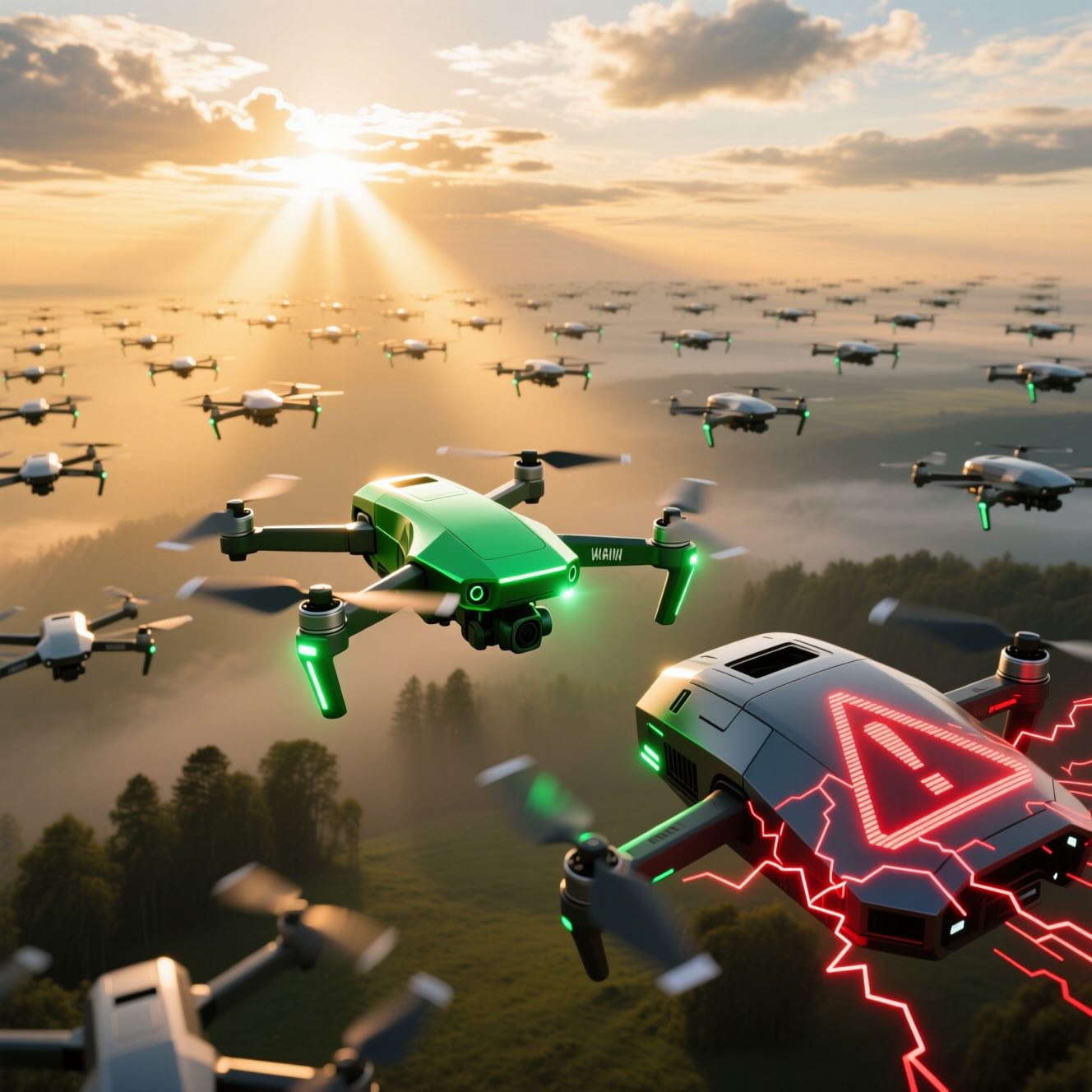
Researchers developed a modular adaptive control system that lets drone swarms and other multi-agent systems stay stable and coordinated even when their sensors and actuators are compromised by cyber attacks.
Imagine a fleet of delivery drones 🚁 coordinating seamlessly to avoid collisions, or a swarm of satellites 🛰️ aligning perfectly to map a hurricane. These aren’t scenes from sci-fi—they’re real-world examples of cyber-physical systems (CPS), where digital intelligence meets physical action.
But what happens when these systems are under attack? 🤖💥 When sensors feed false data or actuators sabotage commands, the consequences can be catastrophic. That’s exactly the challenge a team of researchers from Georgia Institute of Technology set out to solve in their paper, “Mitigating the Effects of Sensor and Actuator Attacks in Uncertain Networked Multiagent Systems.”
In this article, we’ll break down their novel distributed robust adaptive control architecture—a mouthful, we know!—and show how it’s paving the way for safer, smarter, and more resilient autonomous systems.
In a perfect world, every sensor reading is accurate, every actuator responds faithfully, and every agent in a networked system plays by the rules. But in reality, these systems face:
Traditional defense strategies often rely on fault detection and isolation (FDI), which works well for known, predictable faults. But what about adaptive, evolving attacks? Or systems where you can’t tell a lie from the truth? That’s where the old playbook falls short.
The research team introduced a distributed robust adaptive control architecture designed to work even when:
Here’s the genius part: it’s modular. That means you don’t have to redesign your entire control system from scratch. Instead, you “bolt on” an adaptive layer that learns and reacts to attacks in real time. Think of it like an immune system 🦠 for your drone swarm—it detects invaders and mounts a defense without shutting down the whole body.
Each agent in the system (like a drone or satellite) uses:
In simple terms, the controller is like a savvy navigator 🧭 who can still find north even when their compass is spinning wildly.
The team didn’t just theorize—they tested their approach in two high-stakes scenarios:
Nine satellites 🛰️ were tasked with aligning their rotation angles. But attackers:
Without the adaptive controller, the satellites oscillated wildly and failed to sync.
With the adaptive controller, they realigned and tracked the reference signal—despite ongoing attacks.
Four F-16 fighter jets ✈️ flying in formation faced:
Again, the adaptive controller brought them back in line, ensuring pitch rates stayed synchronized.
In essence, this approach doesn’t prevent attacks—it makes systems resilient to them.
The researchers are already looking ahead:
As cyber-physical systems become more embedded in our lives—from smart grids to autonomous vehicles—their security can’t be an afterthought.
By blending robust control theory with adaptive intelligence, the researchers have shown that even in the face of uncertainty and malice, cooperation and coordination can prevail. 🤝
So the next time you see a drone swarm dancing in the sky, remember: there’s a lot more going on behind the scenes than meets the eye.
Cyber-Physical System (CPS) 🖥️➡️🌍 A smart system where computers and algorithms (the cyber part) seamlessly control and monitor physical machinery and processes (the physical part). Think self-driving cars, smart power grids, or drone swarms. - More about this concept in the article "Water Microgrids: The Future of Resilient and Sustainable Water Supply Systems 💧🌊".
Multiagent System (MAS) 🤖🤝🤖 A team of individual robots, drones, or software programs (the "agents") that communicate and cooperate to achieve a common goal that none could manage alone. - More about this concept in the article "Smart Cars, Smooth Traffic 🚗 Multi-Agent Systems That Think Together".
Sensor 📡 A device that measures something about the physical world, like a GPS for location, a camera for vision, or a gyroscope for orientation. It's the system's "eyes and ears." - More about this concept in the article "Ultra-Sensitive Soil Moisture Sensor Revolutionized with Photonic Crystals 🌱".
Actuator ⚙️ A component that is responsible for moving or controlling a mechanism. It's the "muscles" of the system—like a motor that spins a drone's propeller or a hydraulic arm that moves a robot.
Robust Adaptive Control 🛡️🧠 A smart control system that can adapt its own strategy in real-time to handle unexpected changes, uncertainties, or attacks, all while staying stable and robust.
Leader-Follower Architecture 👑➡️👥 A coordination strategy where one agent (the leader) defines the task or path, and the other agents (the followers) coordinate with each other to follow the leader.
Communication Graph Topology 🕸️ A map of who can talk to whom in a networked system. It shows the communication links between agents as a network of connected dots and lines.
Lyapunov Stability 📉✅ A mathematical way of proving that a system (like a drone) will settle into a desired behavior over time and won't suddenly go haystack, even if it gets a small push or disturbance.
Uniform Ultimate Boundedness 🎯 A fancy way of saying the system's error might not go to zero, but it will be guaranteed to stay within a small, predictable zone around the target. It's "close enough" and, most importantly, safe.
Projection Operator 🚧 A safety feature in an adaptive system that prevents its internal estimates from growing infinitely large, keeping them within realistic, pre-defined "guard rails."
Source: Venkat, D.; Haddad, W.M.; Kerce, J.C. Mitigating the Effects of Sensor and Actuator Attacks in Uncertain Networked Multiagent Systems. Aerospace 2025, 12, 1037. https://doi.org/10.3390/aerospace12121037
From: Georgia Institute of Technology; Georgia Tech Research Institute.